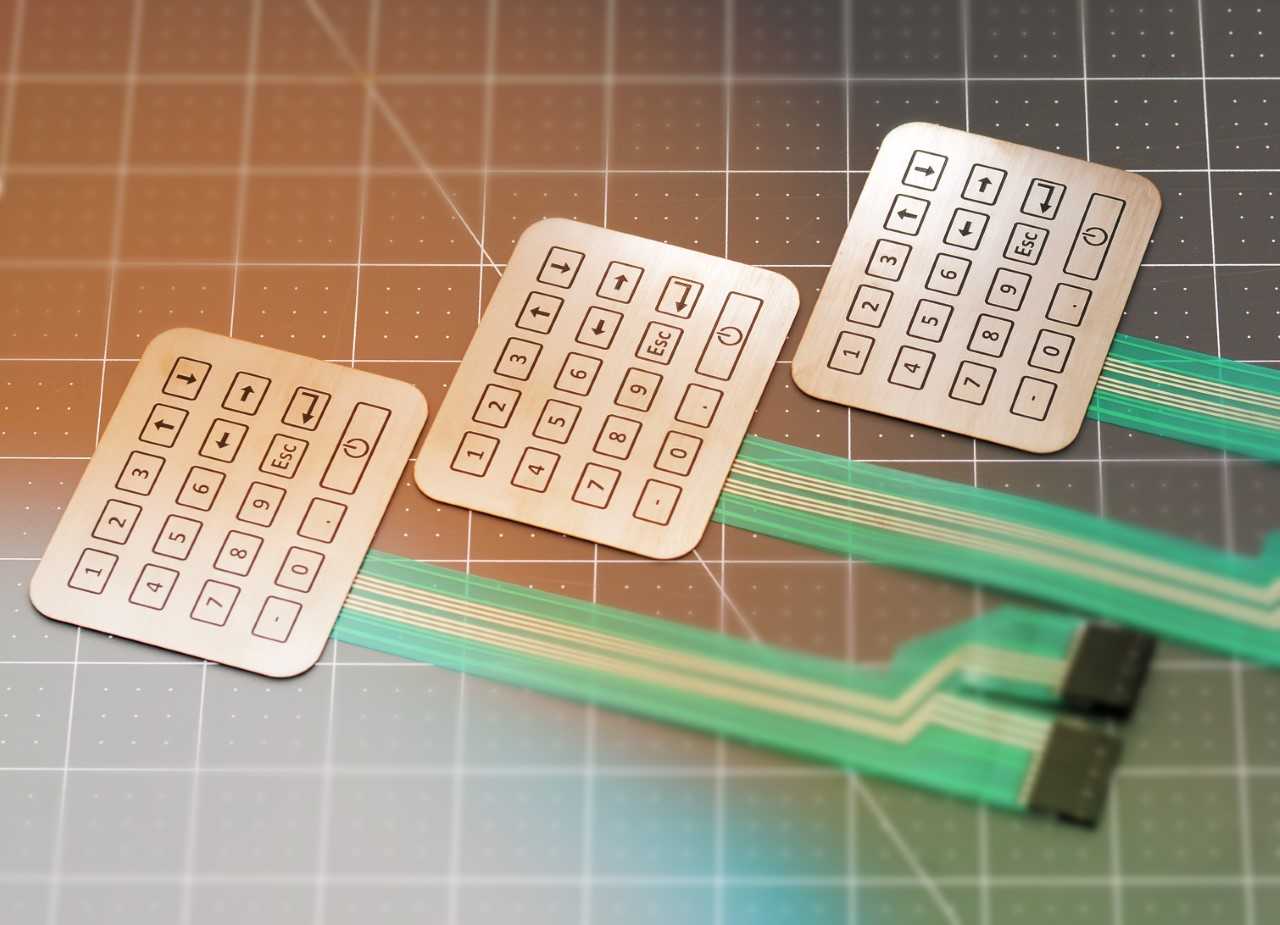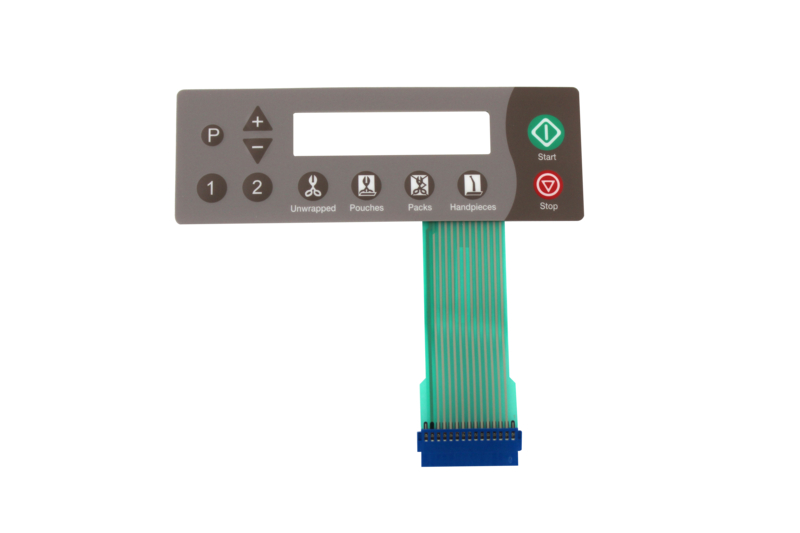Many product developers recommend working with a proven membrane switch manufacturer for custom builds.
All Concerning Membrane Layer Switch: Comprehending Its Layout and Performance
When you think of the control interfaces in modern-day tools, membrane layer buttons often enter your mind. These parts are extra than just buttons; they mix design and performance seamlessly. Comprehending how they work and what makes them reliable can change your viewpoint on everyday electronics. But, there are subtleties to their design and efficiency that you may not know. Allow's discover what sets membrane switches apart from various other control systems.
What Are Membrane Layer Switches?

Membrane buttons can also be customized concerning shape, dimension, and graphics, permitting manufacturers to create distinct interfaces customized to specific products. Generally, membrane layer buttons play a considerable function in boosting user experience across a broad selection of applications.
How Membrane Switches Work
When you push a trick on a membrane layer switch, it activates a straightforward yet reliable mechanism. The top layer, commonly made from flexible product, presses down onto a conductive layer below it. This activity bridges the void in between conductive traces, completing an electrical circuit. As quickly as the circuit closes, it sends a signal to the device's controller, which analyzes your input.
You'll discover that the responsive comments differs based upon the switch layout, offering either a soft click or a more obvious feedback. As soon as you release the trick, the membrane returns to its original position, resuming the circuit and quiting the signal. This process occurs practically immediately, ensuring a receptive individual experience.
Membrane layer switches are prominent because of their longevity and resistance to dirt and wetness, making them excellent for different applications, from family appliances to clinical tools. Recognizing this procedure assists you appreciate their extensive use.
Key Components of Membrane Buttons
Comprehending the essential parts of membrane switches is essential for comprehending their performance and layout. At the core, you'll find the visuals overlay, which provides the aesthetic interface for individuals. Under that, there's a spacer layer that divides the circuit layers, making sure that they do not make call until pushed. The circuit layer is where the magic happens; it is composed of conductive traces that complete the circuit when you press the button. Another necessary aspect is the adhesive backing, permitting the button to stick to surface areas securely. Finally, the protective layer shields against ecological variables and wear, extending the button's life expectancy. Each part plays a considerable role in making certain reputable performance and customer interaction. By comprehending these components, you'll acquire insight into how membrane changes operate and their value in different applications.
Materials Made Use Of in Membrane Layer Switch Over Design
The performance and resilience of membrane layer switches greatly depend upon the products used in their style. You generally encounter polyester and polycarbonate as key substratums as a result of their excellent stamina and flexibility. These products resist scrapes and chemicals, making them perfect for requiring settings.
The conductive layers typically utilize silver or carbon, selected for their integrity and conductivity. membrane switch manufacturer. Silver gives premium efficiency, while carbon is a cost-effective option. For the overlay, you could take into consideration a matte or glossy surface, depending on your visual requirements and customer experience
Make particular to select adhesives that endure ecological elements like temperature level and moisture. Choosing content the right products will certainly assure your membrane layer button stands the examination of time.
Design Factors To Consider for Membrane Layer Switches
While creating membrane buttons, it's vital to take into account different aspects that influence their functionality and user experience. Start by concentrating on the design and button dimension; make certain they're instinctive and easy to navigate.
Don't overlook the visuals layout; clear labeling and shade comparison are considerable for visibility. Verify your style suits ecological aspects, like wetness or temperature level variants, which might affect performance. Keep in mind the significance of screening prototypes with real users to gather responses and make essential modifications. This iterative process assists you refine the layout, confirming it satisfies both functional and aesthetic needs properly. By meticulously thinking about these components, you'll develop a membrane button that boosts usability and complete satisfaction.
Applications of Membrane Layer Switches
Membrane buttons are functional parts located in numerous applications, from commercial devices to consumer electronic devices. You'll see their effect in equipments that call for durable interfaces and in tools that benefit from streamlined styles. Understanding these applications helps you value the functionality and usefulness of membrane layer switches in day-to-day innovation.
Industrial Equipment Usage
When you're looking to boost the functionality of commercial equipment, membrane buttons use a trustworthy option that incorporates resilience with user-friendly layout. These buttons are best for severe settings, supplying resistance to dirt, wetness, and chemicals. Embrace membrane switches to improve your operations and improve general performance.
Consumer Electronics Integration
In the domain name of consumer electronic devices, membrane switches play a crucial function in boosting customer interaction and tool performance. You'll locate them in tools like microwaves, remote controls, and gaming consoles, supplying a seamless means to communicate with modern technology. Their sleek design enables simple assimilation right into various items, making controls user-friendly and straightforward. With their capability to integrate graphics and backlighting, you can appreciate a modern-day visual that complements the device's general look. Membrane layer buttons also guarantee sturdiness and resistance to dust and wetness, expanding the life expectancy of your electronics. By choosing membrane buttons, you boost not just the performance yet also the design of your devices, making daily communications smooth and delightful.
Benefits and Downsides of Membrane Layer Buttons
While membrane switches supply a variety of advantages, they likewise include some drawbacks that you should think about. One considerable advantage is their compact style, making them suitable for space-constrained applications. They're additionally cost-effective, providing a long lasting option with a reduced production expense. Additionally, their seamless surface area is simple to clean, boosting hygiene in atmospheres like health centers.

Membrane layer buttons can have a shorter lifespan compared to mechanical buttons, particularly under heavy use. They can likewise be less responsive, which might influence user feedback throughout operation. Balancing these pros and cons will assist you determine if membrane layer buttons are the ideal fit for your task.
Regularly Asked Inquiries
Exactly How Lengthy Do Membrane Layer Switches Usually Last?
Membrane layer changes commonly last between 5 to 10 years, depending on use and environmental problems. You'll intend to assess aspects like wear, direct exposure to dampness, and temperature fluctuations to assess their longevity successfully.
Can Membrane Layer Switches Be Custom-made for Particular Designs?
Yes, you can tailor membrane layer switches to fit specific layouts (membrane switch manufacturer). You'll have the flexibility to pick colors, forms, view it now and formats that match your project's needs, guaranteeing they blend flawlessly with your general aesthetic
What Is the Cost Variety for Membrane Switch Over Production?
The expense range for membrane layer switch production usually falls in between $1 and $10 per unit, depending upon elements like design intricacy, amount, and materials. You can click to read obtain quotes from manufacturers to locate the most effective alternative.

Are Membrane Switches Over Waterproof or Resistant?
Membrane layer buttons can be made to be waterproof or immune, depending upon products utilized and building techniques. If you need them for damp environments, guarantee you specify those needs during the style process.
How Do Membrane Layer Changes Contrast to Standard Buttons?
Membrane layer switches are normally thinner and extra flexible than standard buttons, supplying a streamlined design. They're usually less complicated to clean up and integrate, yet may not supply the tactile feedback you're made use of to with mechanical alternatives.
Conclusion
